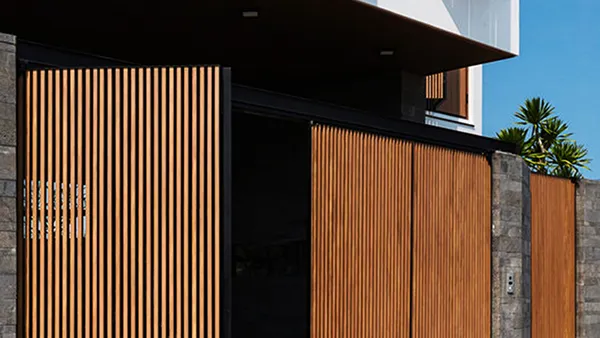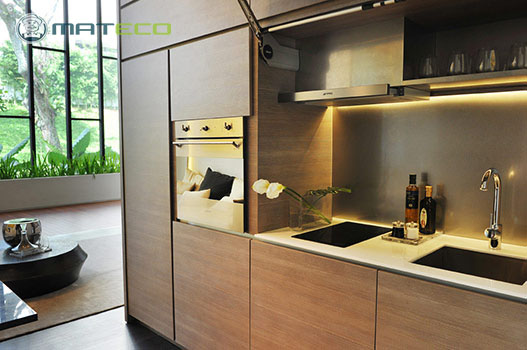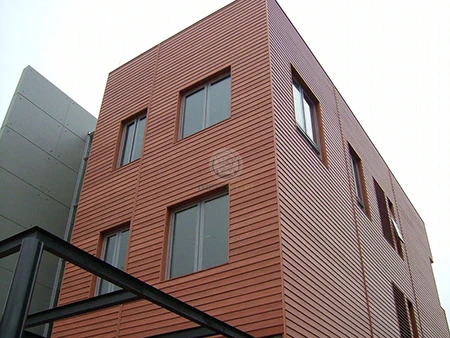Why Composite Decking is the Most Popular Decking Alternative
In the competitive world of outdoor flooring, decking alternatives vary widely in terms of materials, durability, and aesthetic appeal. Homeowners and commercial entities often explore various options before settling on the best choice for their specific needs. Below, we explore six popular flooring alternatives, culminating in why composite decking often emerges as the most popular choice.
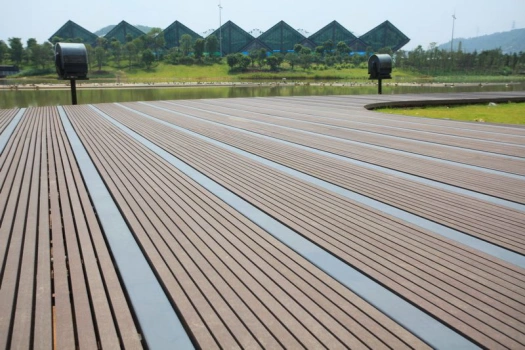
1. Wood Decking
Characteristics: Wood decking is traditionally made from a variety of woods including pressure-treated pine, cedar, and exotic hardwoods like ipe. It is prized for its natural beauty and timeless appeal.
Advantages: Offers a natural look, can be stained or painted, and has a solid feel underfoot.
Disadvantages: Requires regular maintenance such as staining and sealing, can rot, splinter, or warp over time, and is susceptible to insect damage.
2. PVC Decking
Characteristics: PVC decking is made from polyvinyl chloride, a type of plastic. It does not contain any wood fibers, which helps it resist decay and pests more effectively than composite or wood decking.
Advantages: Extremely low maintenance, resistant to stains and moisture, and won’t rot, warp, or splinter.
Disadvantages: Can look less natural than wood, may be slippery when wet, and can be more expensive than some wood options.
3. Concrete Pavers
Characteristics: Concrete pavers are precast blocks of concrete commonly used for outdoor flooring. They can be laid in a variety of patterns and are available in various textures and colors.
Advantages: Highly durable, offers a wide range of design options, and requires little maintenance.
Disadvantages: Hard underfoot, can be difficult to install, and may crack in freezing temperatures.
4. Rubber Paver Tiles
Characteristics: Rubber paver tiles are made from recycled rubber materials. They are often used in areas needing durable yet elastic flooring, such as playgrounds or around pools.
Advantages: Safe and comfortable underfoot, slip-resistant, and environmentally friendly.
Disadvantages: Limited aesthetic options, can emit a rubber odor, and may degrade under direct sunlight over time.
5. Tiles
Characteristics: Tiles used for decking are typically made of ceramic or porcelain. They offer extensive design versatility and can emulate natural materials like stone.
Advantages: Low maintenance, great for hot climates as they stay cool, and available in a variety of designs.
Disadvantages: Can be slippery when wet, grout may require periodic cleaning, and prone to cracking with heavy loads or freezing temperatures.
6. Composite Decking
Characteristics: Composite decking consists of wood fibers and recycled plastics, making it eco-friendly and more durable than wood alone. It mimics the look of wood without the high maintenance.
Advantages: Requires little maintenance, resistant to rot, insects, and weathering, and does not need staining, sealing, or sanding.
Disadvantages: Typically more expensive upfront than wood decking, can become hot underfoot in direct sunlight if in long time.
Why Composite Decking Can Be the Best Alternative
Durability and Maintenance: Composite decking offers a balance of durability and low maintenance that is hard to match. It does not require the regular upkeep of wood decking, such as sanding, staining, or repairing splinters.
Aesthetic Flexibility: Available in a variety of colors and textures, composite decking can suit a wide range of design preferences, closely mimicking the natural beauty of traditional wood or even stone.
Long-term Cost Effectiveness: While the initial investment may be higher, the long-term costs of maintenance and replacement are significantly lower compared to materials like wood or concrete pavers.
Environmental Impact: Made from recycled materials, composite decking supports environmental sustainability, reducing waste and often conserving forest resources.
Application of Composite Decking
Composite decking is versatile enough to be used in various applications including residential decks, commercial patios, around pools, and even rooftop bars. Its weather resistance makes it suitable for a wide range of climates and its ease of installation is appreciated in both DIY projects and professional construction.
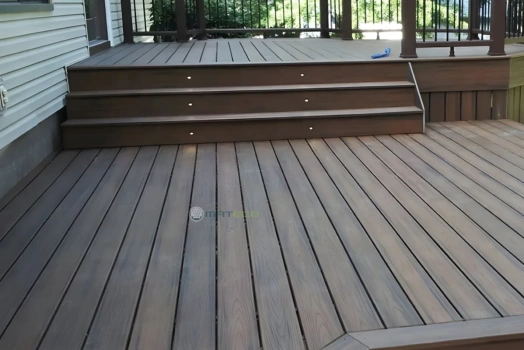
Why is Composite Decking Eco-Friendly?
Composite decking is increasingly regarded as an environmentally friendly choice for outdoor flooring solutions. Here are the key reasons why this material stands out for its eco-friendly properties:
Reduced waste: Composite decking reduces waste by utilizing reclaimed wood and recycled plastics, which are typically challenging to recycle. This process decreases the amount of waste sent to landfills and released into the environment.By reusing plastic and wood materials, composite decking reduces waste and the demand for virgin resources.
Durability and Longevity: One of the most significant eco-friendly aspects of composite decking is its durability. Unlike traditional wood decking, which may require replacement every 10 to 15 years, composite decking can last 25 to 30 years or more without significant degradation. This longevity reduces the frequency of material replacement, which in turn minimizes resource consumption and waste production over time.
Low Maintenance Requirements: Composite decking does not require the frequent use of harmful chemicals for maintenance. Wood decks often need regular treatments with stains, sealers, and preservatives, which can contain volatile organic compounds (VOCs) harmful to the environment. Composite decking needs only basic cleaning, preferably with eco-friendly soap and water.
Reduction in Deforestation: Since composite boards utilize recycled wood fibers, the demand for new wood is lower, which can help reduce the pressure on forests and decrease deforestation rates. This is particularly impactful when considering the reduction in the use of exotic woods, which are often harvested from sensitive tropical forests.
Fully Recyclable: At the end of its long life, composite decking materials are fully recyclable. This means they can be repurposed into new composite products, further reducing the need for new materials and contributing to a circular economy where materials are reused and recycled continuously.
By combining aesthetics, durability, and an eco-friendly profile, composite decking stands out as a top choice for those looking to invest in their outdoor spaces with a long-lasting, beautiful, and practical solution.
If you are looking for a WPC manufacturer, MATECO WPC will be your best choice.
Website: https://www.matecowpc.com
WhatsApp: +86-13380085620
Email: info@matecowpc.com




